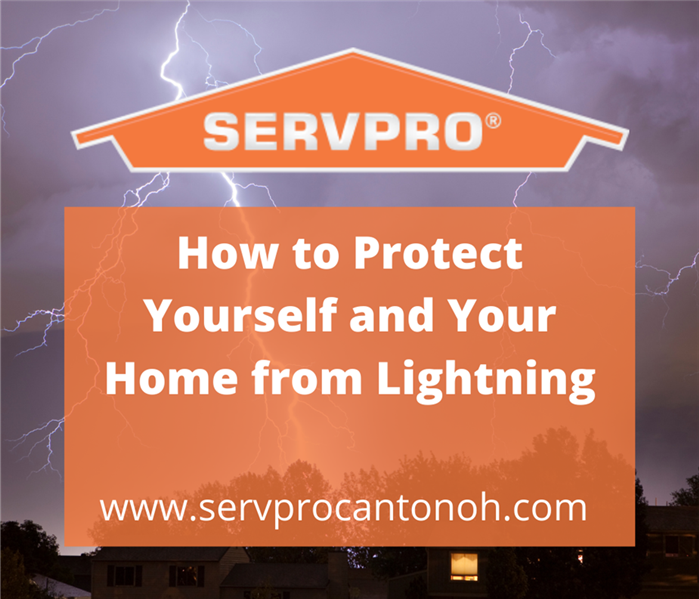How to Protect Yourself and Your Home from Lightning
9/6/2021 (Permalink)
The CDC puts your odds of being struck by lightning at 1 in 500,000. But they also say, “Lightning is one of the leading causes of weather-related fatalities.”
Eitherway, you’re odds are much better than your home’s. 2020 saw 17 U.S. lightning fatalities. In contrast, insurance policyholders made 77,000 lightning claims in 2019. The claims resulted in more than $900 million in damages.
Protect your home from lightning
These statistics show that lightning is a serious problem for homeowners. So check out these tips for protecting your home in 2021.
Lightning Protection System
Have a lightning protection system professionally installed. These systems give lightning a designated path to follow, so it doesn’t travel to unprotected wiring or piping in your home. They consist of air terminals (lightning rods), main conductors, ground rods, bonds, surge protectors, and even tree protection.
Lightning protection systems should only be installed by contractors listed by Underwriters Laboratories and certified by the Lightning Protection Institute.
Surge Protection Devices (SPDs)
These devices redirect electrical surges that come to your home through powerlines. They protect your appliances by diverting the electrical surges into the ground. They should also be professionally installed.
How to protect yourself from lightning
If you’re indoors, and you know lightning is coming, unplug electrical appliances. If lightning is already striking, stay away from all electrical appliances, windows, doors, piping, water sources like sinks and showers, and landline telephones.
If you’re outdoors, find shelter, preferably in a lower elevation. Lightning travels by the path of least resistance, so the taller an object is, the more likely it will be hit. A vehicle with the windows closed is a safe option.
Never use a tree, as they're often the tallest structures and most likely to be struck. Also stay away from telephone and utility poles, and any metal objects.
If you’re interested in learning more about protecting you and your home from lightning, contact the Lightning Protection Institute.
If you’re home or business suffered damages from a lightning strike, and you need emergency services, contact our 24/7 emergency service line. We have over 1,700 U.S. and Canadian locations, so we’re strategically positioned to be faster to any size emergency.






 24/7 Emergency Service
24/7 Emergency Service
